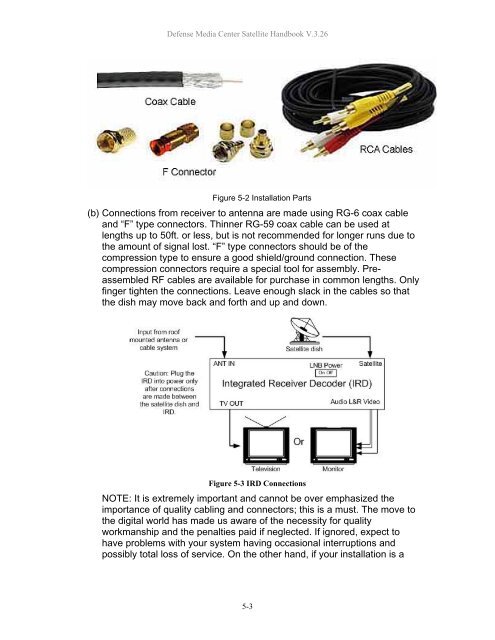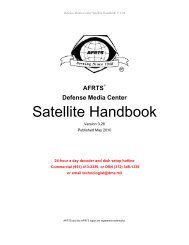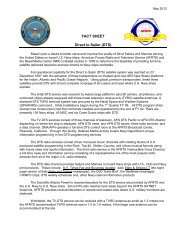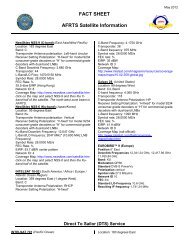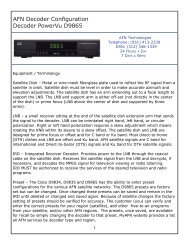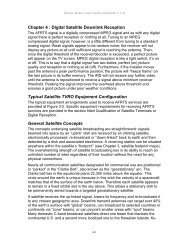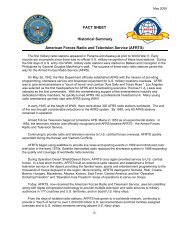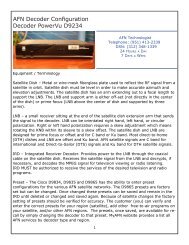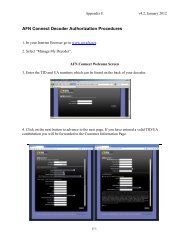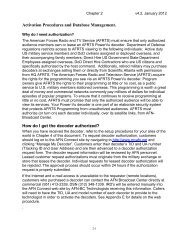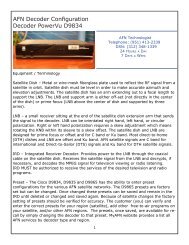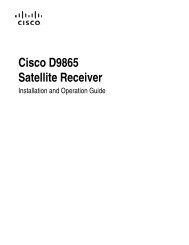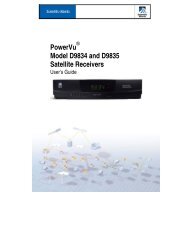AFRTS Defense Media Center Satellite Handbook
AFRTS Defense Media Center Satellite Handbook
AFRTS Defense Media Center Satellite Handbook
You also want an ePaper? Increase the reach of your titles
YUMPU automatically turns print PDFs into web optimized ePapers that Google loves.
<strong>Defense</strong> <strong>Media</strong> <strong>Center</strong> <strong>Satellite</strong> <strong>Handbook</strong> V.3.26<br />
Figure 5-2 Installation Parts<br />
(b) Connections from receiver to antenna are made using RG-6 coax cable<br />
and “F” type connectors. Thinner RG-59 coax cable can be used at<br />
lengths up to 50ft. or less, but is not recommended for longer runs due to<br />
the amount of signal lost. “F” type connectors should be of the<br />
compression type to ensure a good shield/ground connection. These<br />
compression connectors require a special tool for assembly. Preassembled<br />
RF cables are available for purchase in common lengths. Only<br />
finger tighten the connections. Leave enough slack in the cables so that<br />
the dish may move back and forth and up and down.<br />
Figure 5-3 IRD Connections<br />
NOTE: It is extremely important and cannot be over emphasized the<br />
importance of quality cabling and connectors; this is a must. The move to<br />
the digital world has made us aware of the necessity for quality<br />
workmanship and the penalties paid if neglected. If ignored, expect to<br />
have problems with your system having occasional interruptions and<br />
possibly total loss of service. On the other hand, if your installation is a<br />
5-3


